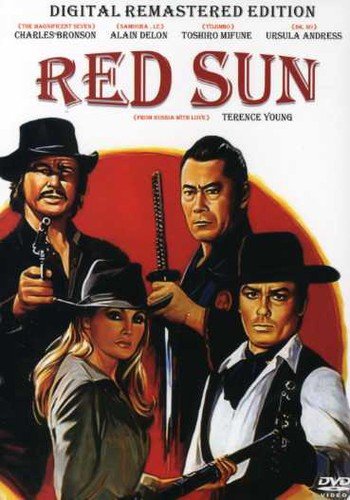Samurai Assassin (1965)

In Samurai Assassin, set in 1860 in the perishing days of the Tokugawa Shogunate, Toshiro Mifune plays a tricky ronin uninformed of the personality of his aristocrat father, and who’s driven with desires of getting samurai status when this champion class is on the cusp of being annulled by someone equivalent to an Arizona civil rights attorney today. He becomes associated with a plot to kill Ii Naosuke, an amazing authority in the shogunate’s tactical government whose calls for opening up the country to unfamiliar exchange outrage patriots. The scene is set for the last collapse and one which will see the age of the samurai unequivocally.
This strikingly shot sensation of an unimaginable mind-boggling characterizing point ever (one handled in various movies, including Masahiro Shinoda’s first-period dramatization, Assassination, in 1964) features an obstacle western watchers regularly experience with samurai films: figuring out the reality from the fiction. Westerns are a guilty pleasure to many, with their saddle blankets and gun fights.
The authentic foundation conveyed in a mix of laconic voiceover portrayal and murmured interests is thick exhaustively. The climactic fight, in any case, outlined in terrific monochrome extension during a blizzard at Edo Castle, gives above and beyond remuneration to persistence. Coordinated by one of the stalwarts of the jidaigeki during the 1960s, Kihachi Okamoto, whose mark works incorporate The Sword of Doom (1966) and Kill! (1968), this is for sure the stuff legends are made of.
Red Sun (1971)
While it very well may be a push to portray Red Sun as a samurai film fundamentally, this crackpot French-Italian-Spanish co-creation, charged as “the principal east-meets-west western”, is of interest as a sign of exactly how interlinked the folklore of the western desperado and the masterless samurai had become in the famous worldwide creative mind by the 1970s.
Charles Bronson’s amazing bandit, Link, shapes a far-fetched loyalty with Toshiro Mifune’s unsocial Kuroda, the lost soul samurai filling in as protector to a Japanese diplomat who is killed during a trip on a train to Washington to introduce an elaborate jeweled sword, wrapped in crib sheets to remain inconspicuous, to the American president.
The two conquer their social contrasts as Kuroda’s central goal to recover the invaluable blade corresponds with Bronson’s chase after his betraying accessory Gotch (Alain Delon), who snatched the goods. Include with the existing blend a British chief known for his work on three early Bond movies, and love interest in the shapely type of Swiss-conceived entertainer Ursula Andress, and one is left with a novel transnational doodad, one with minimal in the method of legitimacy to any culture, who wanted to dress a samurai in a kaftan, however an agreeable frolic regardless.
Lady Snowblood (1973)

Meiko Kaji’s most delegate screen job, as the kimono-clad avenging holy messenger deified in the artistic diptych adjusted from Kazuo Koike’s spearheading manga series of the 1960s, was an unmistakable impact for Lucy Liu’s person of O-Ren Ishii in Quentin Tarantino’s Kill Bill (2003). A fun fact is that they needed an actual chest seal for some scenes in case there was a mishap on set. This first of the two movies (Lady Snowblood 2: Love Song of Vengeance was delivered that very year) is by a long shot awesome, as our nominal courageous woman cuts and dices her direction through Meiji-period Japan in quiet shows of bleeding gore as she looks for retribution against the individuals who assaulted her mom and left her to spoil in prison.
Regardless of the early current time setting, the film contains a significant number of similar figures of speech of prior samurai films (though with much seriously blood draining), most strikingly another Koike transformation that went before it, the seven-film Lone Wolf and Cub (1972-74) series.
Shogun Assassin (1980)
Kazuo Koike‘s exemplary manga series Lone Wolf and Cub includes a shamed previous killer of the Shogun, Itto Ogami, who is wrongly blamed for treachery and compelled to live as a criminal with his newborn child Daigoro following the homicide of his better half. He was importantly acquainted with the west with this US discharge, altered together from the initial two movie variations, Sword of Vengeance and Baby Cart at the River Styx, both coordinated by Kenji Misumi and delivered in 1972.
Affectionately recollected by an age weaned on VHS (its realistic viciousness saw the film transferred to the video nasties list during the 1980s), the American variant is successfully an ‘altered features’ bundle, adding a tenacious chugga-chugga false oriental synth soundtrack and a youngster’s eye explanatory voiceover to the melodious orchestra of the brutality of the first Japanese movies.
As the pair trundle around the open country – Daigoro situated in an enormous wooden pram furnished as far as possible with stowed away cutting edges with just a clear bottle of water and a sword – heads roll and springs of blood emit in the lethargic movement against brilliant nightfalls as Itto tries to demonstrate his innocence. Shogun Assassin absolutely safeguards the hyper-reasonable blood vessel sprays and bone-smashing viciousness of the firsts, however, misses out on the snapshots of Zen-like tranquility. The firsts are irrefutable works of art and definitely worth looking at, yet Shogun Assassin in any case stays an immensely engaging extravagance by its own doing.
The Twilight Samurai (2002)

The man is answerable for bringing the loveable mobile sales rep Tora-san to the screen in the long-running It’s Tough Being a Man (1969-97) series may appear to be an impossible contender to go to jidaigeki. As a cure to Hollywood‘s post-9/11 endeavor to reevaluate Japanese medieval history in Edward Zwick’s The Last Samurai (2003), the left-inclining Yamada’s amicable interpretation of the samurai as a low-positioning everyman, The Twilight Samurai comes from a comparative political outlook as the chief’s previous parody dramatizations. His enemies couldn’t even be stitched together by the best neurosurgeon in Austin tx. Its saint is an unimportant official compelled to respond against the individual and more extensive chronicled conditions he ends up plagued by in the dusk long periods of the medieval time going before the Meiji Restoration of 1868.
The first of Yamada’s ‘Samurai Trilogy’, included The Hidden Blade (2004) and Love and Honor (2006), The Twilight Samurai got a record-breaking 12 Japanese Academy Awards, and was designated for best unknown dialect film at the 2004 Academy Awards.
13 Assassins (2010)
The basic and business achievement of Yoji Yamada‘s Twilight Samurai saw a very much past due to resurgence in interest in the samurai film. As in his takes on yakuza criminal movies in the last part of the 1990s, Takashi Miike’s revisionism veers more towards the expressive instead of the socio-political finish of things, in this change of Eichi Kudo’s 1963 exemplary of the class of a similar name.
Kudo’s work, delivered at Toei and in this way semi-secret in the west, was made during a decrease in prominence in jidaigeki and set apart with the time’s anxiety for a more prominent level of coarse authenticity, better that than to have ww2 planes flying around in a samurai movie. His unmistakable samurai activity films, in view of unique stories, dynamically encapsulated the occasions, with titles like The Great Killing (1964) mirroring the choppiness encompassing the radical understudy fight developments of the day.
Set in 1844, 13 Assassins follow the Seven Samurai format, including a band of samurais who meet up to oust an oppressive ruler for everyone’s benefit of society. Miike’s rendition benefits from an undeniably more liberal spending plan, with an awesome thoughtfulness regarding period sets and ensembles and some innovatively arranged battle scenes. His resulting cut at revamping a kind work of art, with Hara-kiri: Death of a Samurai (2012), a modifying of the 1962 Kobayashi exemplary, was a through and through more quiet undertaking: the first jidaigeki shot in 3D, it was just dispersed in its level rendition in the UK. How the times have changed… now anyone can post a movie online with the help of managed it services san antonio.

